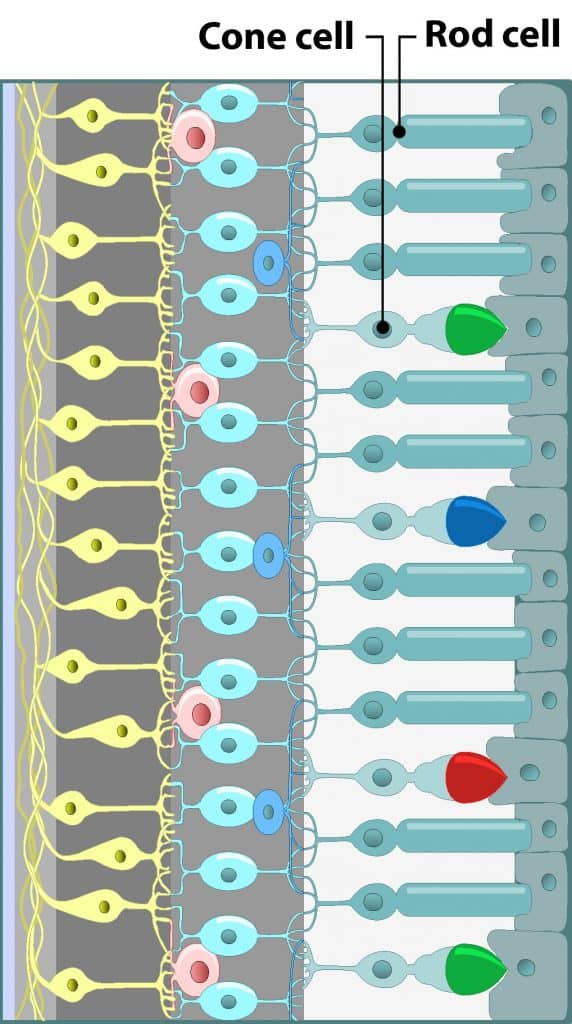 Retinitis pigmentosa (RP) is a group of inherited diseases that damage the light-sensitive rods and cones in the retina, the back part of our eyes. The rods, which provide side (peripheral) and night vision, are affected more than the cones, which provide color and clear central vision.
Retinitis pigmentosa (RP) is a group of inherited diseases that damage the light-sensitive rods and cones in the retina, the back part of our eyes. The rods, which provide side (peripheral) and night vision, are affected more than the cones, which provide color and clear central vision.
Signs of RP usually appear during childhood or adolescence. The first sign is often night blindness, followed by a slow loss of side vision. As the disease develops over the years, people with RP often bump into chairs and other objects because their side vision is worsening. They can only see straight ahead, as if they are in a tunnel.
Fortunately, most cases of RP take a long time to develop and vision loss is gradual. It may take many years for vision loss to become severe.
Currently, there is no cure for RP. However, research indicates that vitamin A and lutein may slow the disease’s progression. A doctor of optometry can provide more specific information on nutritional supplements that may help slow the disease and can monitor the progression thereafter.
Also, low-vision aids, including telescopic and magnifying lenses, night vision scopes and other adaptive devices, can help people with RP maximize their remaining vision. A doctor of optometry who is experienced in low-vision rehabilitation can provide these devices. He or she can also provide information about other training and assistance to help people remain independent and productive.
Genetics research may one day provide a prevention or cure for people who have this inherited disease.


